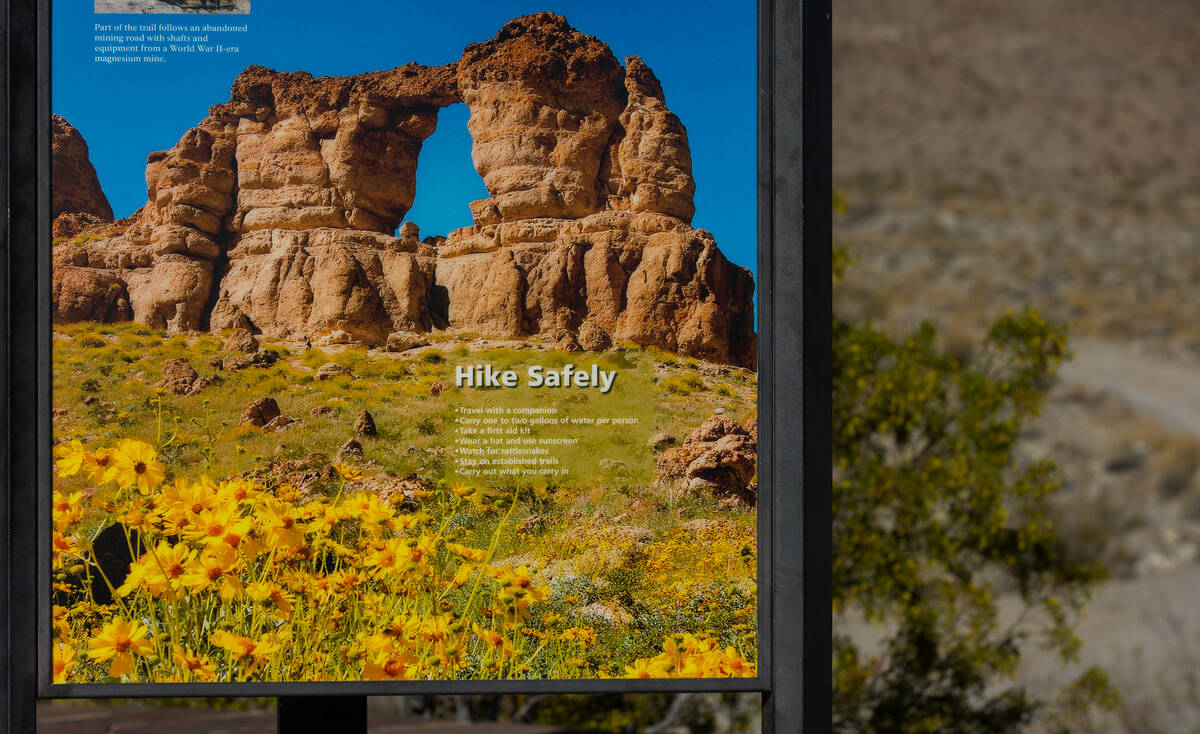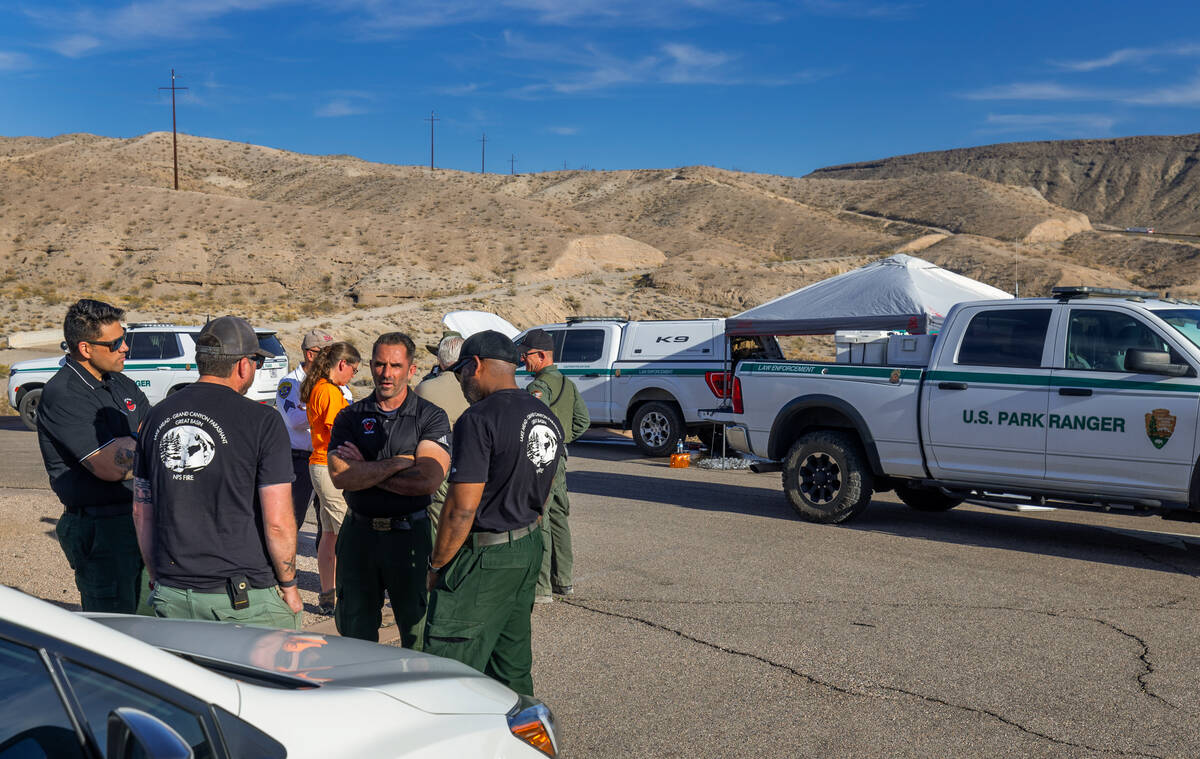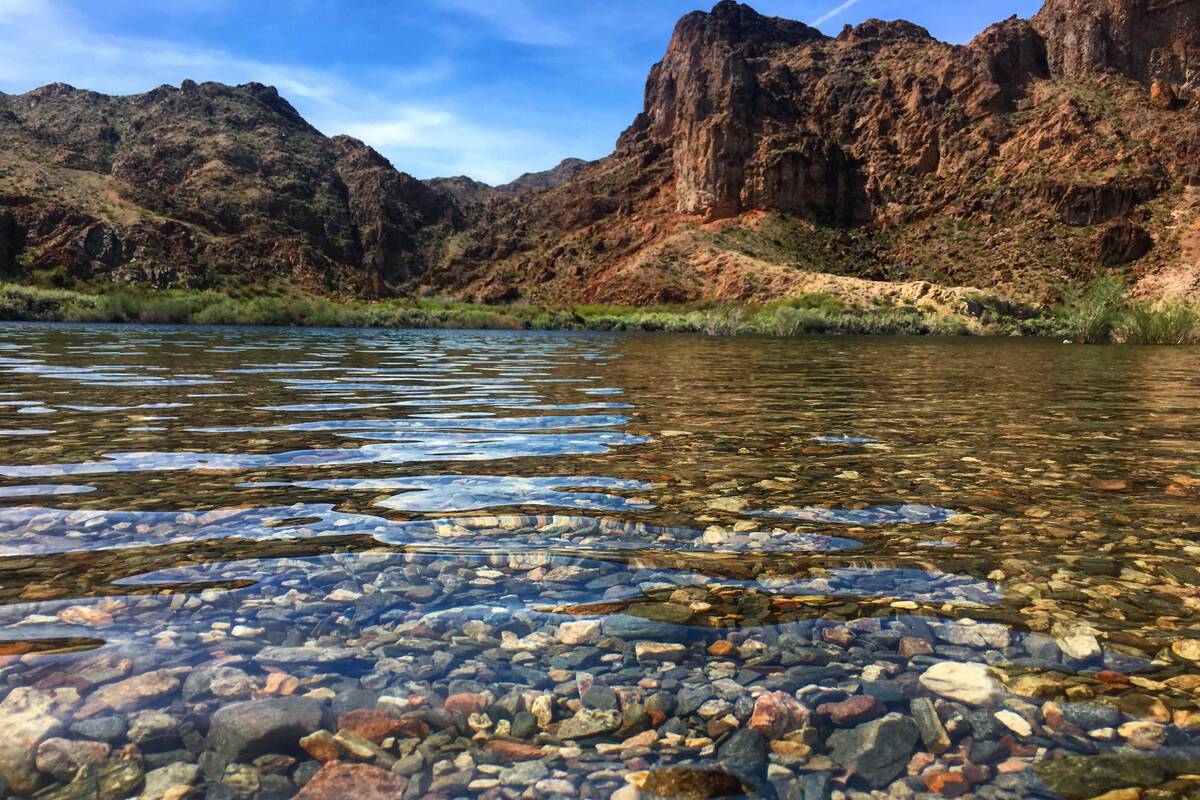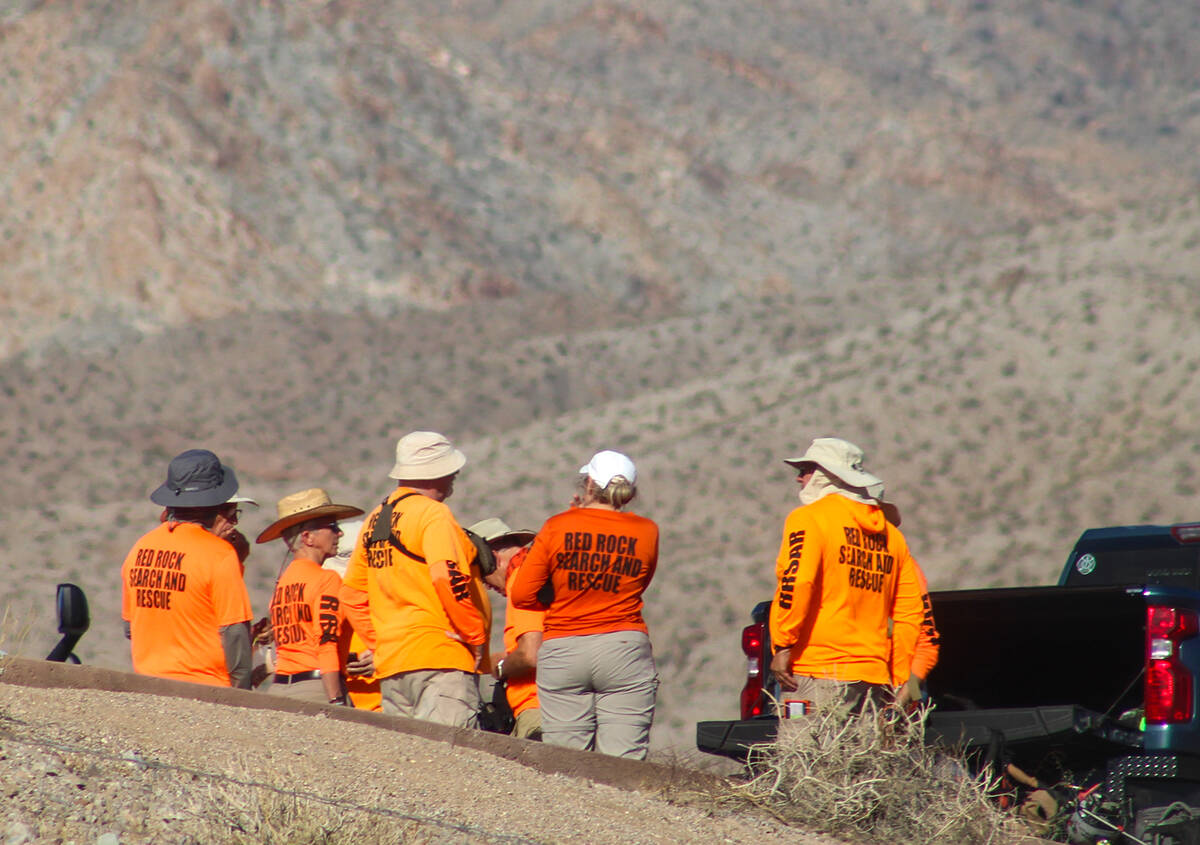Students rescued after running out of water on 97-degree day near Lake Mead
Authorities in Arizona rescued a large group of special needs students on Thursday who reportedly ran out of water and were in distress as temperatures soared during a field trip near Lake Mead National Recreation Area’s Willow Beach.
According to a source and a National Park Service Instagram post, rescue operations were undertaken for the group consisting of between 20 and 30 high school students who were on a trip to the White Rock Canyon Trail, about 3.6 miles from the Nevada-Arizona border off Interstate 11. The students had been located and were receiving treatment, the source said.
As of 6:47 p.m., the hikers had been taken off the trail, according to the source. It was not yet clear which school the students were from, or if any of the people received medical attention.
A spokesperson for the Mohave County Sheriff’s Office confirmed to the Las Vegas Review-Journal on Thursday afternoon that it had deployed a search and rescue unit to assist in the multi-agency search, which was led by the park service. The park service said it would provide further details early Friday, but an Instagram post on Thursday by the Lake Mead National Recreation Area — which is managed by the park service — offered more details.
According to the post, rangers responded to a rescue involving 28 hikers, including three adults and 25 children with special needs, who attempted to reach the Arizona Hot Springs “without adequate preparation.”
Numerous first responder vehicles from multiple agencies including the park service had responded to the scene on Thursday. A helicopter was also on site.
Hiker dies Wednesday
As well, the post noted, a hiker from a separate party died Wednesday on the Arizona Hot Springs Trail “in what is suspected to be a heat-related incident.” Five others belonging to that group “who were also experiencing heat distress” needed to be evacuated by helicopter, the post said.
Thursday’s temperature near the trailhead reached 97 degrees, according to the National Weather Service, and temperatures were expected to reach 100 degrees on Friday. The park service’s post also indicated that temperatures in that area were expected to exceed triple digits in the coming days and that “many hikers are not adequately prepared for these extreme conditions.”
“This incident underscores the severity of the current conditions and the significant strain these emergencies place on park resources,” the post stated.
The post also noted that the Arizona Hot Springs and Goldstrike trails are temporarily closed due to “dangerously high temperatures and multiple heat-related search and rescue incidents.”
A webpage maintained by the park service describes the White Rock Canyon Trail as a 6.5 mile “out-and-back” with approximately 885 feet of elevation change. The trail is not maintained and is considered a “strenuous” difficulty. The trail also connects to the Arizona Hot Springs trail.
Heat kills
Experts have said 2024 was the hottest — and deadliest — on record for Nevada, largely due to effects of climate change.
An estimated 526 deaths in Southern Nevada alone were attributed to extreme heat last year, or an increase of about 70 percent from the previous year, according to the Clark County coroner’s office. The agency began officially recording heat-related deaths in 2021, and those figures have increased in each year since 2022, data shows.
In July 2023, Las Vegas residents Jessica Rhodes, 34, and Diana Matienzo Rivera, 29, were found dead on the 4.6-mile Prospect Trail at Valley of Fire State Park. The two, who had gone hiking, were believed to have run out of water as temperatures near the trail reached 118 degrees.
The average high temperature in the summer of 2024 was 107.6 degrees, and an all-time record of 120 was reached in July. Southern Nevada also set a record with 27 days setting new high temperatures, as well as records for the most consecutive days above 115 degrees (seven).
Additionally, a 2024 series from the Review-Journal examined the worsening summertime heat spells and the toll extreme heat takes on people, especially older residents and those with substance abuse issues. In addition to the human toll of extreme heat, the series dissected the difficulties local governments have in preparing heat-mitigation plans and accurately counting heat deaths.
Contact Casey Harrison at charrison@reviewjournal.com. Follow @Casey_Harrison1 on X or @casey-harrison.bsky.social on Bluesky.



























